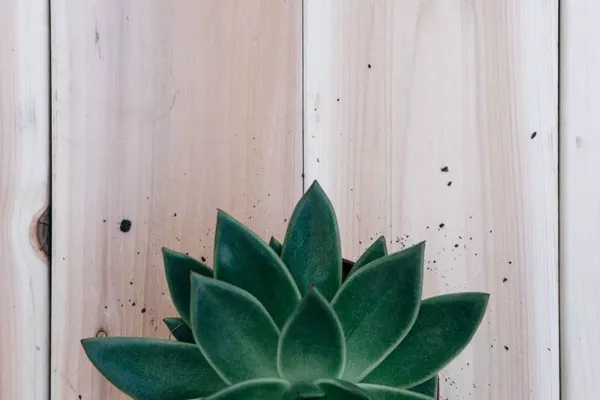Succulents, with their diverse shapes and striking colors, have become a favorite among plant enthusiasts. One creative and aesthetically pleasing way to showcase these resilient beauties is by planting them in shallow bowls. This article provides a detailed guide on how to expertly plant succulents in shallow bowls, along with essential tips for selecting the right container, choosing suitable succulent varieties, and ensuring their proper care and maintenance.
1. Selecting the Perfect Shallow Bowl
Choosing the right container is the first step in creating a captivating succulent arrangement. When selecting a shallow bowl, consider the following factors:
Drainage: Ensure that the chosen bowl has adequate drainage holes or can be easily modified to provide proper drainage. Excess moisture can lead to root rot, so it’s crucial to prevent water from pooling at the bottom.
Size and Depth: Opt for a shallow bowl that allows ample space for the succulents’ roots and growth. However, avoid bowls that are too deep, as succulents are adapted to shallow root systems.
Material: Shallow bowls come in various materials, such as ceramic, clay, or concrete. Choose a material that complements your aesthetic preferences and provides a stable environment for the plants.
2. Selecting Suitable Succulent Varieties
Size and Growth Habit: Since shallow bowls have limited space, choose compact succulent varieties that won’t outgrow the container quickly. Look for rosette-forming succulents, small Echeverias, Haworthias, and Sedums.
Colors and Textures: Consider selecting succulents with contrasting colors and textures to create an eye-catching display. Combine those with varied leaf shapes and colors to add visual interest.
Complementary Growth Rates: It’s essential to choose succulents with similar growth rates to prevent one species from overshadowing the others. This ensures a harmonious and balanced arrangement.
3. Planting Process: Step-by-Step Guide
Gather Materials
Shallow bowl with drainage holes
Succulent potting mix or well-draining soil
Assorted succulent plants
Small stones, pebbles, or grit for additional drainage
Decorative elements (optional)
Prepare the Bowl
Fill the bottom of the bowl with a layer of small stones, pebbles, or grit. This enhances drainage and prevents the roots from sitting in standing water.
Prep the Soil
Use a well-draining succulent potting mix or create a mix by adding perlite, coarse sand, or pumice to regular potting soil. This ensures proper aeration and drainage.
Arrange the Succulents
Before planting, arrange the succulents on the surface of the soil to determine their placement and spacing. Experiment with different configurations until you achieve a visually pleasing arrangement.
Planting
Gently remove each succulent from its nursery pot and loosen the roots. Create small holes in the soil and place the succulents, ensuring they are centered and slightly elevated to prevent water from accumulating around the base.
Fill and Tamp the Soil
Carefully fill in the gaps around the succulents with the prepared soil mix. Gently tamp down the soil to secure the plants in place, making sure not to compact it too densely.
Top Dressing (Optional)
For added visual appeal, consider applying a thin layer of decorative gravel, pebbles, or moss to the surface of the soil. This can help retain moisture and prevent soil erosion.
Watering and Settling
Water the newly planted succulents lightly, allowing the water to settle the soil around the roots. Be cautious not to overwater, as succulents prefer to dry out between waterings.
4. Caring for Shallow Bowl Succulents
Light and Sun Exposure
Place the shallow bowl in a location that receives bright, indirect sunlight. Avoid placing it in direct sunlight, especially during the hottest part of the day, as this can lead to sunburn.
Watering
Succulents in shallow bowls have limited soil volume, so they require less water than those planted in larger containers. Water sparingly and allow the soil to dry out completely before watering again. Use the “soak and dry” method.
Fertilization
Feed the succulents with a diluted, balanced, liquid fertilizer during the growing season (spring and summer) about once a month. Avoid fertilizing during the dormant period (fall and winter).
Pruning and Maintenance
As succulents grow, they may require occasional pruning to maintain their shape and prevent overcrowding. Trim back any leggy or damaged growth to promote healthier growth.
5. Refreshing the Arrangement
Over time, succulents may outgrow their shallow bowl or require a refreshment. Follow these steps to rejuvenate the arrangement:
Remove Succulents
Gently remove the succulents from the bowl and gently shake off excess soil. Carefully inspect the roots and remove any dead or unhealthy parts.
Refresh the Soil
Clean out the old soil from the bowl and replace it with fresh, well-draining succulent potting mix.
Prune and Replant
Trim any overgrown or leggy growth from the succulents and reposition them in the bowl, considering a new arrangement or layout.
Settling and Watering
Water the replanted succulents lightly to help settle the soil around the roots. Follow the watering guidelines mentioned earlier.
Conclusion
Planting succulents in shallow bowls offers a creative and visually appealing way to display these captivating plants. By carefully selecting a suitable container, choosing complementary succulent varieties, and following the planting and care steps outlined in this guide, enthusiasts can create stunning arrangements that enhance both indoor and outdoor spaces. Shallow bowl succulent arrangements provide a unique opportunity to experiment with colors, textures, and layouts, allowing plant lovers to express their creativity while cultivating a thriving and beautiful miniature garden.


